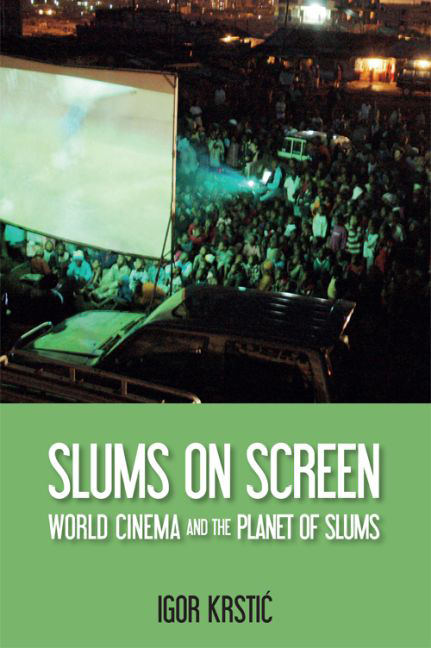9 - Bombay Cinema
from Part Two - Local Expressions
Summary
The most persistent image of Bombay is the cheek-by-jowl coexistence of skyscrapers and slums …
Ranjani MazumdarUnlike Rio de Janeiro, a city that has been labelled as a cidade partida, Mumbai has, instead, been described as a Maximum City – a phrase coined by the journalist Suketu Mehta in a book of the same title – that is, a city of ‘maximum extremes’. In Mumbai slums are visible everywhere; they are located in the midst of the city's centre and are not, or not exclusively, moved away to peripheral zones, on hills, or sealed off by walls, as they are in Rio de Janeiro. In short, unlike Rio, Mumbai is perceived as a city in which the rich and the poor, rural migrants and cosmopolitan urbanites, ‘slumdogs’ and millionaires live side by side, rather than segregated from each other. The city is thus marked by the stark contrasts between its rich and poor citizens, who live close together in a densely populated metropolitan region that is now occupied by 18.5 million people. In its central district, ‘Greater Mumbai’, the population density reaches an average of 29,000 persons per square kilometre – according to estimates, the highest in the world – whereas 50 to 60 per cent (or more than six million people) live in approximately 2,000 pavement settlements, zoppad-pattis, bustees, chawls or slums, located near dumping grounds, beside railway tracks or in similarly vacant areas. Yet even though the city's majority population consists of slum-dwellers, they occupy merely 8 per cent of the city's land. Mike Davis has therefore described Mumbai as ‘the global capital of slum dwellers’ (2007: 23), while some journalists nicknamed the city ‘Slumbay’ to hint at its melting-pot nature, in which extreme inequalities meet extreme scarcity of space.
One might argue that given these differences between Rio de Janeiro and Mumbai, it is no coincidence that the two main examples discussed in the final chapters of this book depict their respective urban spaces in very different ways. While Cidade de Deus recounts the history of drug-related violence in one of Rio de Janeiro's (symbolically) enclosed and (physically) far removed favelas, the story in Slumdog Millionaire mainly takes place in the middle of the ‘global capital of slum dwellers’.
- Type
- Chapter
- Information
- Slums on ScreenWorld Cinema and the Planet of Slums, pp. 225 - 256Publisher: Edinburgh University PressPrint publication year: 2016



